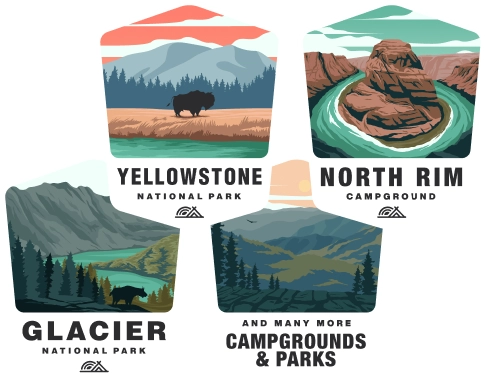Camping at Antelope Valley Indian Museum State Historic Park
Overview
Antelope Valley Indian Museum State Historic Park is located in the western Mojave Desert at 15701 East Ave. M, in Lancaster, California. This unique museum showcases the cultural heritage and history of the indigenous peoples of the Great Basin and surrounding regions. The museum itself is housed in a historic structure built atop a butte of reddish volcanic rock, offering a glimpse into the life and artwork of Native American cultures.
Camping Information
Facilities: As of my last update, Antelope Valley Indian Museum State Historic Park does not offer traditional camping facilities such as tent or RV sites. Visitors interested in camping might need to look for nearby campgrounds or other state parks that offer camping services.
Alternative Camping Locations: For those looking to camp in the vicinity, Saddleback Butte State Park is located approximately 20 miles east of Lancaster and offers family campsites.
Operating Hours: While camping is not provided in the park, the museum itself is typically open on weekends. It's important to check the California State Parks official website or contact the park directly for current hours, as they can vary by season or due to special events.
Activities and Exhibits
- American Indian Artifacts: The museum has a vast array of artifacts and exhibits that present the lives and arts of local Native American tribes.
- Nature Walks: Visitors can enjoy a self-guided nature trail which offers information about the flora and fauna of the region as well as outstanding desert views.
- Picnicking: There are picnic areas available, where visitors can relax and enjoy the scenic views.
Special Events and Programs
The museum occasionally hosts special events and educational programs, including:
- Native American celebrations: These might include dances, music, and storytelling that highlight the culture of the local tribes.
- Educational workshops: Activities like native plant walks, traditional crafts, and lecture series on Native American topics can be part of the programming.
- Hands-on activities: Intended especially for children to learn about Native American cultures through interactive experiences.
Visitor Guidelines
- Preservation: As it is a historic site, visitors are expected to respect both the natural environment and cultural artifacts.
- Pets: Pet policies may restrict animals from museum buildings and certain areas. Check the park's pet policy before visiting.
- Accessibility: Many state parks offer accessible facilities, but it is wise to verify in advance if you have specific needs.
Planning Your Visit
- Weather Considerations: The desert climate means hot temperatures in the summer and cool to cold in the winter. Dress in layers and be prepared with sufficient water, sun protection, and appropriate gear.
- Reservations and Fees: There might be a fee for entering the museum or for participation in special programs. Reservation policies for events will vary, so consult the state parks' website ahead of time.
Contact and Additional Information
To obtain the most current information, potential visitors should contact the park directly or visit the official California State Parks website. There, you can find additional details on hours of operation, event scheduling, and any COVID-19 related restrictions or changes in operation.
Remember that my information may be outdated, so always check with official sources prior to your visit.
